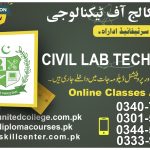I. Introduction
A. Definition of ISO 13485:
ISO 13485 is an international standard that specifies requirements for a quality management system (QMS) in organizations involved in the design, production, and servicing of medical devices. It focuses on meeting regulatory requirements and enhancing customer satisfaction, ensuring that medical devices consistently meet applicable safety and quality standards.
B. Purpose of ISO 13485 Training:
ISO 13485 training aims to educate professionals on the principles and practices of implementing and maintaining a quality management system in the medical device industry. It equips participants with the knowledge to ensure compliance with the standard, enhancing their skills in quality assurance, risk management, and regulatory requirements, ultimately leading to improved product quality.
C. Importance of Quality Management in Medical Devices:
Quality management is critical in the medical device industry due to the potential risks associated with unsafe or ineffective products. Implementing a robust QMS helps organizations ensure that their devices meet regulatory standards, improve patient safety, and maintain a competitive edge. Quality management fosters a culture of continuous improvement and accountability, enhancing overall operational efficiency.
II. Understanding ISO 13485 Standards
A. Overview of ISO 13485 Requirements:
ISO 13485 outlines the requirements for a quality management system that organizations must follow to ensure consistent design, development, production, and servicing of medical devices. The standard emphasizes risk management, product lifecycle processes, and regulatory compliance, ensuring organizations can deliver safe and effective medical products to the market.
B. Key Components of the Standard:
The key components of ISO 13485 include establishing a quality policy, implementing risk management practices, maintaining proper documentation, conducting internal audits, and ensuring employee competency. Organizations must also focus on supplier management and continual improvement, which are crucial for maintaining compliance and enhancing overall product quality throughout the lifecycle.
C. Differences Between ISO 13485 and Other Standards (e.g., ISO 9001):
While ISO 9001 provides a general framework for quality management systems applicable across industries, ISO 13485 specifically addresses the unique requirements of the medical device sector. ISO 13485 emphasizes regulatory compliance, risk management, and traceability, ensuring that organizations focus on product safety and effectiveness in addition to overall quality management.
III. Benefits of ISO 13485 Training
A. Enhanced Compliance with Regulations:
ISO 13485 training helps organizations better understand regulatory requirements specific to the medical device industry. By ensuring employees are knowledgeable about compliance standards, organizations can minimize the risk of non-conformances, thereby avoiding costly penalties and enhancing their reputation among regulatory bodies and customers.
B. Improved Quality Management Practices:
Training provides participants with essential skills and knowledge to implement effective quality management practices. By understanding ISO 13485 requirements, employees can identify areas for improvement, streamline processes, and enhance product quality, ultimately leading to increased customer satisfaction and better overall performance within the organization.
C. Increased Market Competitiveness:
Organizations that invest in ISO 13485 training demonstrate their commitment to quality and compliance, making them more competitive in the medical device market. Certified companies gain a reputation for delivering safe and effective products, which can attract new customers, open up new markets, and lead to long-term business success.
IV. Key Topics Covered in ISO 13485 Training
A. Quality Management System (QMS) Principles:
Training covers the fundamental principles of a quality management system, including customer focus, leadership, involvement of people, process approach, and continual improvement. Understanding these principles helps organizations effectively implement and maintain an ISO 13485-compliant QMS, ensuring consistent product quality and regulatory compliance.
B. Risk Management in Medical Device Development:
 ISO 13485 Training
ISO 13485 Training
ISO 13485 training emphasizes the importance of risk management throughout the product lifecycle. Participants learn how to identify, analyze, and mitigate risks associated with medical devices, ensuring that safety and performance considerations are integral to the design and manufacturing processes.
C. Documentation and Record-Keeping Requirements:
Proper documentation is critical for compliance with ISO 13485. Training includes best practices for creating and maintaining accurate records, such as quality manuals, procedures, and work instructions. Effective documentation ensures traceability, accountability, and facilitates audits, contributing to overall quality management.
V. Training Methods and Formats
A. Online vs. In-Person Training Options:
ISO 13485 training is available in various formats, including online courses and in-person workshops. Online training offers flexibility and accessibility, allowing participants to learn at their own pace. In-person training, on the other hand, provides interactive experiences, networking opportunities, and hands-on practice, which can enhance understanding and retention of key concepts.
B. Duration and Structure of Training Programs:
Training programs for ISO 13485 can vary in duration, typically ranging from one to five days, depending on the depth of content covered. Programs are structured to include lectures, interactive discussions, case studies, and practical exercises, ensuring participants gain a comprehensive understanding of the standard and its application in the workplace.
VI. Who Should Attend ISO 13485 Training?
A. Target Audience (Quality Managers, Engineers, etc.):
ISO 13485 training is designed for professionals involved in the medical device industry, including quality managers, engineers, regulatory affairs specialists, and production staff. This training is essential for anyone responsible for ensuring product quality, compliance, and safety in the medical device lifecycle.
B. Benefits for Different Roles:
Different roles within an organization benefit uniquely from ISO 13485 training. Quality managers gain insights into compliance requirements, engineers learn to incorporate quality into design processes, and regulatory affairs specialists enhance their understanding of regulations, contributing to a unified approach to quality management.
C. Importance of Cross-Functional Training:
Cross-functional training in ISO 13485 promotes collaboration and a shared understanding of quality management practices across departments. By involving various roles, organizations can foster a culture of quality, ensuring that everyone is aligned in their commitment to meeting regulatory requirements and improving product quality.
VII. Preparing for ISO 13485 Certification
A. Steps to Achieve Certification:
To achieve ISO 13485 certification, organizations must follow specific steps, including conducting a gap analysis, developing a quality management system, and documenting procedures. Once the system is implemented, a certification audit by an accredited body must be completed to verify compliance with the standard.
B. Role of Training in Certification Readiness:
ISO 13485 training plays a crucial role in preparing organizations for certification. By equipping employees with the necessary knowledge and skills, training ensures that teams understand the requirements and can effectively implement the QMS, ultimately leading to a smoother certification process.
C. Common Challenges and Solutions:
Organizations often face challenges during the certification process, such as resource constraints, resistance to change, and documentation overload. Training can address these challenges by providing strategies for effective implementation, fostering employee engagement, and establishing clear documentation processes, ensuring a successful certification journey.
VIII. Post-Training Implementation Strategies
A. Integrating Training into Daily Operations:
Post-training, it’s essential to integrate ISO 13485 principles into daily operations. Organizations should encourage employees to apply their learning to everyday tasks, fostering a quality-focused culture. Regular meetings and updates can reinforce training concepts, ensuring they remain part of the operational framework.
B. Continuous Improvement and Monitoring:
Organizations should establish a framework for continuous improvement following ISO 13485 training. Regular monitoring of processes, conducting internal audits, and soliciting feedback from employees can help identify areas for enhancement, ensuring that the quality management system evolves in line with industry best practices.
C. Importance of Feedback and Assessment:
Gathering feedback after training is crucial for evaluating its effectiveness. Organizations should assess participants’ understanding and application of ISO 13485 principles through surveys, quizzes, or performance evaluations. This feedback helps identify areas for further training and ensures that quality management practices are consistently upheld.
IX. Conclusion
A. Recap of ISO 13485 Training Importance:
ISO 13485 training is vital for organizations in the medical device sector, providing employees with the knowledge and skills necessary to implement an effective quality management system. By understanding the standard, participants can contribute to improved product quality, regulatory compliance, and enhanced patient safety.
B. Encouragement to Pursue Training:
Organizations are encouraged to invest in ISO 13485 training for their teams. Doing so not only strengthens compliance with industry standards but also fosters a culture of quality and continuous improvement, ultimately leading to better outcomes for patients and greater market competitiveness.
C. Final Thoughts on Quality Management in Medical Devices:
In the highly regulated medical device industry, quality management is paramount. ISO 13485 training empowers professionals to ensure compliance, improve processes, and enhance product quality. As technology and regulations evolve, ongoing training will remain crucial for maintaining high standards and protecting patient safety.











